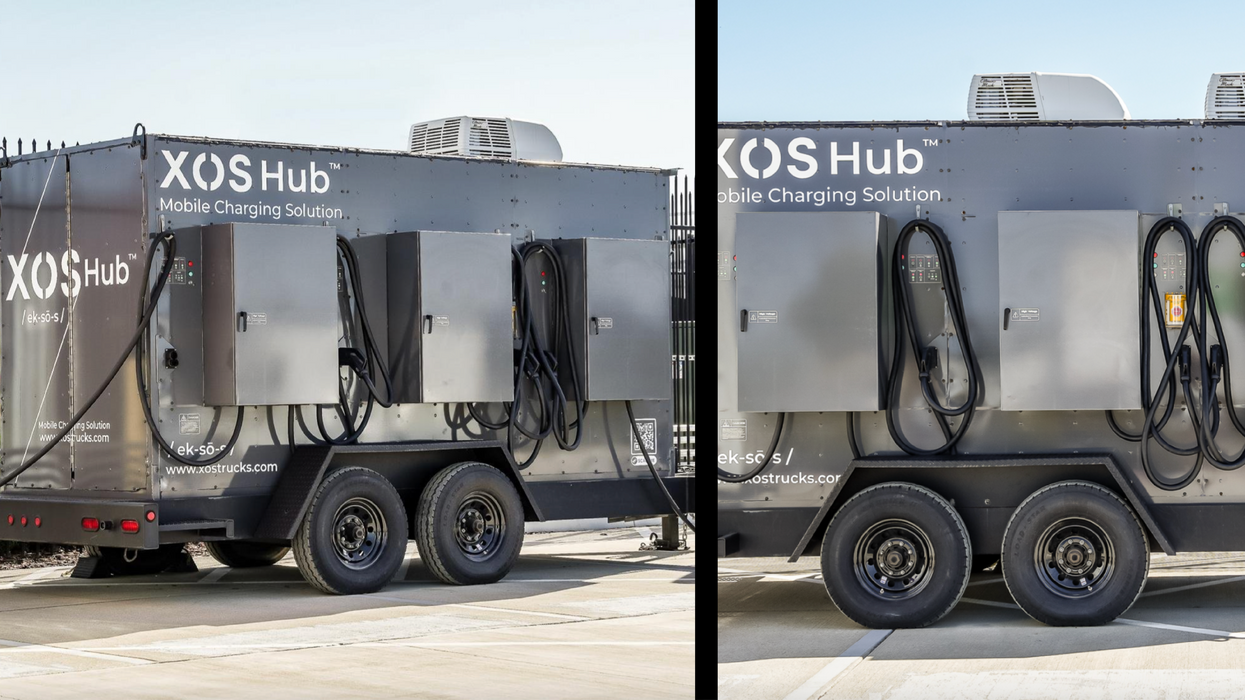Will Portable Charging Be the Answer to EV's Biggest Tech Problems?
David Shultz reports on clean technology and electric vehicles, among other industries, for dot.LA. His writing has appeared in The Atlantic, Outside, Nautilus and many other publications.

This is the web version of dot.LA’s daily newsletter. Sign up to get the latest news on Southern California’s tech, startup and venture capital scene.
Last week electric truck-maker Xos announced the second generation of their portable electric vehicle charger known as The Hub. It’s smaller, more powerful, and can charge more vehicles at once than the first generation charger. The specs are good, but probably won’t change anyone’s conception of what’s possible from mobile storage: It’s got a 390 kWh capacity and charges up to 5 vehicles at 40kW, meaning it’ll charge an average EV battery in about an hour. An Xos Stepvan with a 140kWh battery will take about 3.5 hours to charge.
That’s not exactly mind-melting performance, but that’s not really the point. Danny Marquez, director of Energy Solutions and Products at Xos, says The Hub is intended for three primary use cases, all of which speak to the larger challenges facing the still facing electrification effort.
The first is transmission. Building chargers for vehicle depots isn’t inherently difficult, and plenty of high speed units are getting installed every day. What is challenging is actually getting those chargers connected to the grid. Oftentimes supplying all those new electrons to a depot requires new hardware from the utility company. These projects can take multiple years in some cases, meaning fleet owners who want to transition to electric are simply unable to take the plunge even when the technology makes financial sense for their business. “The hub enables you to quickly deploy to a site. You don't need to do upgrades. It ties into existing power supplies,” says Marquez. “So it's a stopgap measure.”
On the subject of the grid and its inadequacy, Xos is also positioning The Hub as a solution for avoiding brownouts and blackouts. As we saw late last summer, the grid in California is fragile, and especially vulnerable to heatwaves. Having backup power on site can give EV fleet owners the peace of mind to know their vehicles will still be able to operate if the grid goes down.
Finally, because The Hub stores energy, Marquez says that clients have been using it to save on electricity costs by charging it in the middle of the day when renewables are at their peak and electrons are cheap, and then using that stored energy to recharge their vehicles in the evening when grid electricity prices go up. This flexibility makes The Hub potentially attractive even to clients who already have chargers installed at their depot.
Despite the fact that all three of these use cases could–and theoretically should–be solved by building a more resilient grid with battery storage, Marquez says the company still sees The Hub as a medium or even long term technology. “We think that the product is going to continue to evolve, and we’re going to keep on matching use cases,” he says. “We see that there's a strong demand for this product right now, and even more so over the next few years as easy [EV] penetration rates go up.”
Unlike the first generation of The Hub, which served as a prototype for users and the company, version 2.0 is actually intended to be sold to Xos’ customers. “We think that it's going to be one of our flagship products,” says Marquez. “We’re really optimistic about the future of the product and looking forward to bringing it to market and helping solve some of our customers’ issues.”
- Xos Receives Multi-Million Dollar Order for Armored EVs ›
- LA Has Become a Magnet for EV Charging Startups. Biden's Plan Could Supercharge Them. ›
- Does California's New EV 'Transparency' Law Give Companies a Loophole? ›
- Xos Launches a Mobile Charging Station For Electric Truck Fleets ›
David Shultz reports on clean technology and electric vehicles, among other industries, for dot.LA. His writing has appeared in The Atlantic, Outside, Nautilus and many other publications.





 Image Source: Tinder
Image Source: Tinder Image Source: Apple
Image Source: Apple